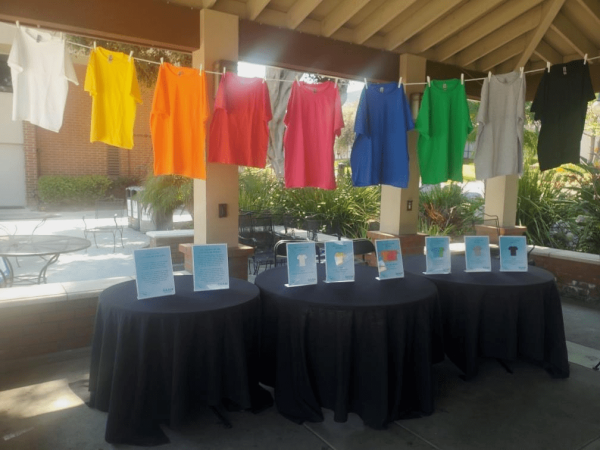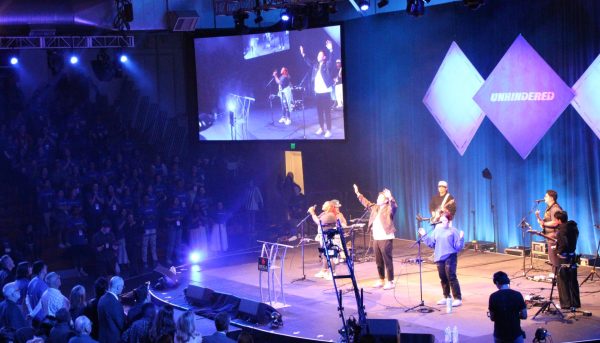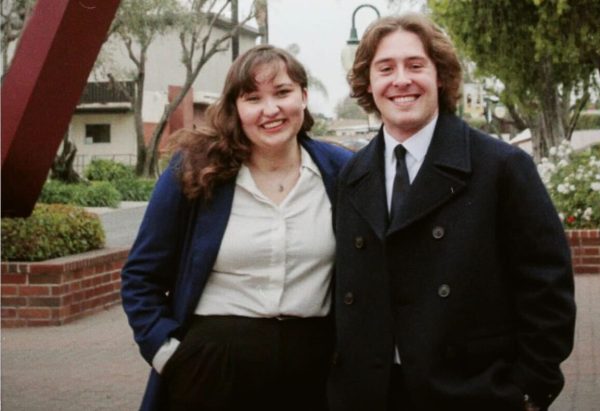Christian colleges struggle to keep pace with demographic shifts
Christian schools discuss the topic of diversity while trying to keep up with the national trends.
October 29, 2011
With current population estimates projecting ethnic minorities will become the U.S. population majority within 40 years, private Christian institutions are discovering themselves behind the curve of this radical demographic shift.
Struggling to become diverse
Multi-ethnic programs director Glen Kinoshita stated that Biola has been dealing with this challenge.
“Enrollment is increasing, but we still lag behind both secular schools and the regional and national demographics,” Kinoshita said. “Christian colleges in general still tend to be predominantly white, middle class evangelicals … Obviously there’s some improvement, but there’s a long way to go.”
A 2009 research study published by the Council for Christian Colleges and Universities showed their member institutions, including Biola, average ethnic diversity statistics of less than 20 percent and are growing more slowly than comparable schools. The Western region alone revealed a gap of 10.9 percent between CCCU institutions and non-CCCU schools, with progress being even more dismal in the less-diverse Midwest.
As ethnic minorities continue to invest in college educations, Biola’s diversity statistics have also gradually improved. In 2010, Biola recorded 59 percent of its students in the white race category, while Asians represented 15 percent, Hispanics 12 percent and African-Americans 3 percent. The numbers have varied slightly over the years, but the trajectory has been up overall, according to undergraduate admissions director Andre Stephens.
This reflects the national trend. Between the years 2009-2010, 38 percent of all 18 to 24-year-old African-Americans were enrolled in college, and Hispanics increased their enrollment by 24 percent, according to a recent Pew study.
Learning from other universities
Yet Biola’s diversity statistics still struggle to reflect the color and texture of its surrounding culture. Over 4 million Hispanics live in Los Angeles County alone, and comprise 97 percent of the total population of East Los Angeles, according to the 2010 U.S. Census. President Barry Corey has shared his vision for learning from the rich urban environment of nearby Los Angeles, where Biola began.
Opposite Biola on the east coast, Nyack College, a CCCU school located in New York, reveals that it is possible to be broadly diverse. Its diversity statistics show that 35 percent of its 3,000 students are African-American, 28 percent Caucasian, 21 percent Latino and 7 percent Asian. It is probably the most diverse school in the CCCU conference, Stephens noted.
Secular schools are far ahead of Christian higher education when it comes to the topic of diversity, Kinoshita said. They tend to be more willing to talk about this issue, have been dealing with it openly for longer and are more advanced in their programs in pursuit of integration.
“The question is, are we always going to be catching up, or are we ever going to be leading this challenge of diversity?” Kinoshita said. “Are we always reacting or do we ever see ourselves, as Christians in general, leading the march?”
Needing to take action
The challenge of diversity presents the opportunity for Christian schools to reflect deeply on their theology and put biblical truths about the body of Christ into practice. Kinoshita noted that the Bible is full of multicultural encounters, and that diversity is not just a value, but a mandate in the kingdom of God.
“The entire discussion is evolving and that’s good,” said professor Larry Smith, who makes diversity a prominent topic in the curriculum for his Los Angeles Literature class each semester. Smith warned, however, that the issue is “far more complex than merely getting up to par on minority numbers.”
Defining diversity
Smith said that integration of minorities is a chronic and nuanced problem, suggesting that a primary issue lies in the very definition of diversity.
“For instance, do you count wealthy Koreans as minorities?” Smith asked. “What about black kids raised by white families? Those with Hispanic surnames but an absentee father, so, they were basically raised by a white mom? Foreign students? Is a student from Argentina Hispanic? Is someone who looks black but is only 25 percent really African-American or should they be considered white since 75 percent of them is?”
Smith clarified that the diversity is not just about skin color, but also about socioeconomic status.
“The idea of equalizing student bodies is to include traditionally disenfranchised minorities,” Smith said.
These are exactly the types of people Biola, and schools like it, are dedicated to reach and include as they seek to realize the kingdom of God and the body Christ died for.






